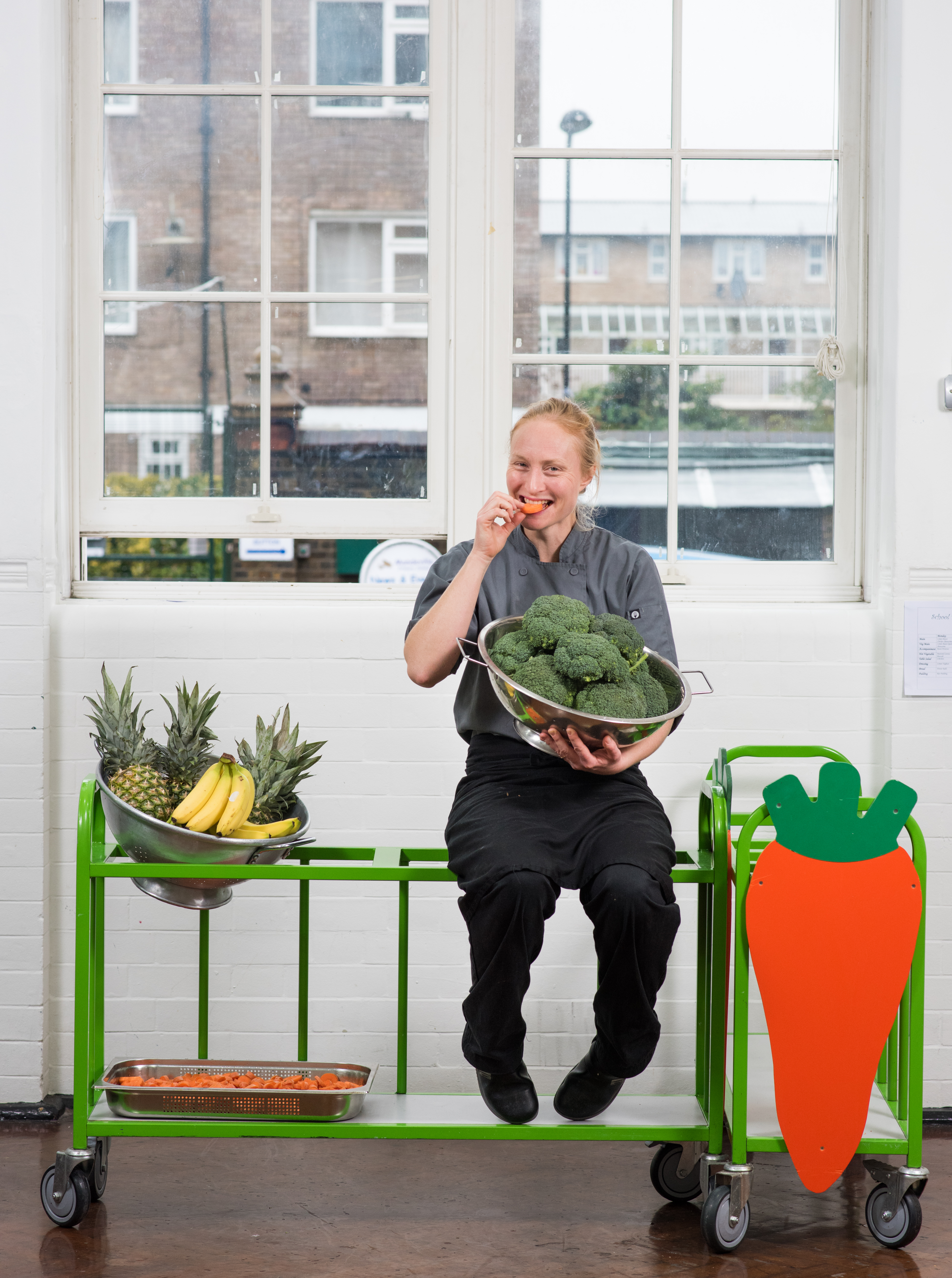Happy Meals
Text by Tanis Taylor
Photos by Jørn Tomter / tomter.net
First published in ILCR magazine issue 5, 2016
Photos by Jørn Tomter / tomter.net
First published in ILCR magazine issue 5, 2016
How long did you spend eating lunch today? Ten minutes? Five? Was it monitor-lit leftovers? Or an inhaled sandwich on the way back from the petrol station? We are a nation of fast eaters. The OED no longer has a definition for lunch ‘hour’ as the average office lunch ‘break’ is now 22 minutes long, with 30 per cent of us forgoing one altogether. Fast food not only gives us indigestion, it also inspires overeating (the brain takes 20 minutes to register a full stomach) and increases the risk of type two diabetes as our insulin response doesn’t have time to catch up with the food sugar intake. These practices start early. They start in school.

Remember school dinners? Sweated cabbage, breaded meat, damp smells and decibels. When you’ve 600 kids to process in just over an hour, ‘processed’ becomes the operative word - cue the sound of cans being opened, freezer bags being snipped and chip fat fryers sparking up. Thanks to Jamie Oliver Turkey Twizzlers are off the menu but otherwise convenience can still be king in a school kitchen. Kids want to rush off and play football. Staff need to make sure even reluctant eaters get calories on board. The only thing slow about school dinners is the cabbage simmering on the hob since drop-off…

Unless you’re having lunch at Mandeville. At Mandeville 60 reception-aged children are eating their lunch and have been now for well over twenty minutes. Today lunch is [SOME ITEMS FROM TODAY’S MENU HERE] In the middle of each long table is a rotating salad board with peppers, carrots and cucumbers to graze on. Children peel off for seconds, bread or desserts and the staff get a free meal if they eat with the children so they all reliably do (they aren’t allowed to sit together). The result is a family-style service which feels relaxed, good natured, leisurely even. ‘There used to be lots of shouting at lunchtime, now it’s gone completely.’ Says Angela Church, head chef at Mandeville School (see inset). The reason? Louise Nichols, Executive Headteacher at Mandeville, Kingsmead and Gayhurst schools explains. ‘Well-fed children tend to be better behaved. Good, nutritious whole foods sustain you better without the energy levels dropping off so sharply. At Kingsmead breakfast club is free and over half the kids come in for it to eat and socialize. We sit together, we talk about the day and it translates into improved behaviour and learning.’ On the continent children typically get much longer for their lunch. They will sit down, with proper cutlery, eat, talk, digest. ‘In British dinner halls it’s more like a race-through.’ Says Nichols. That all changed in Gayhurst Community School in 2015 when head chef Nicole Pisani left high-paying diners at Ottolenghi’s Nopi for knee-high diners in Hackney. Church was enlisted soon after and since then there has been a direct correlation between students engaging with their lunch and engaging with their lessons.

The slow philosophy here extends to the kitchen where everything is now made from scratch from whole ingredients by ‘chefs’ - as they now call staff. Whole fish come from Devon to be filleted on-site (kids can help though only in limited numbers until the kitchen is adapted), 25kg of veg arrives daily and where possible they use produce grown, with the kids, in their own kitchen garden. Everyone does everything, staff are not segregated (there’s no one person doing all the menial jobs) and ergo morale is much higher. Amazingly they are still delivering their food on budget – 90p per child, per meal – and there’s far less packaging so the school’s waste bills are down. ‘What has gone up is staffing costs.’ Explains Nichols. ‘We’ve been able to offer our kitchen staff more hours and to up-skill them which is beneficial for moving on later.’ For many the 2 ½ hour dinner-lady shift was more about opening packets and crowd-control than about creativity. Now chefs actively contribute to the menu which stops it becoming a cozy, white, middle class, affair. Firm favourites at Mandeville are jollof rice and jerk chicken, rice and peas are available most meals, they do a mean lamb curry, there’s West Indian Chicken, chicken shawarma and a kofta recipe suggested by Turkish parents. Initially there was resistance from parents who didn’t want their kids eating unfamiliar food, or worse coming home hungry. So Church – a onetime MasterChef contestant - got them in for lunch, chewed over their feedback and changed-up the menu. ‘When I started I was doing more adult-friendly food that I thought the kids might appreciate. Now I’ve totally come to terms with the fact that kids do love pasta and pizza so I think how I can do it better with the best ingredients made healthier and in-house?’ Some things, she admits, there’s no shifting. ‘Aubergine. Can’t give it away.’ Others require a flourish. Kids love anything theatrical so salads at Gayhurst might be edible flowers or pea shoots in little pots with a tub of scissors that they can just snip them off. Tips for getting reluctant kids to try something new? Serve things separately so unadventurous kids can try the component parts gradually without feeling the whole dish is ‘contaminated’ by the sauce. Veg? Overcooking is a sin - aim for a crunch. Fish? ‘Honestly I’ve never had a problem with it.’ Says Church. Rather than deep-frying they make their own seasoning, some butter, breadcrumbs from yesterday’s bread, which they sprinkle over fish before baking. Served with a yoghurt tartare sauce and chips. Hungry yet?

Ultimately Nichols has ambitions to grow the programme - joining-up Angela’s work in the kitchen with growing in the garden, with curriculum requirements around cookery and food ed, with insights into waste and surplus supermarket food and with the aims of The School Food Plan – a plan that supports schools, headteachers and governers in making cultural changes to the food that children eat and how they learn about it (www.schoolfoodplan.com). There are whispers of a trail-blazing academy designed to support food education at all levels from young children to adults. But for now aspirations are more modest. Church would like emptier trash bins after lunch service and a sustainable staffing structure that will inspire rather than process its kids. Nichols hopes to give pupils exposure, at an early age, of using whole foods and learning recipes. ‘I’d like primary school children to leave school with a love of food and to raise a generation who in future will not have to rely on processed and ready meals.’

When food is fuel to be inhaled mindlessly and at speed we are programming our kids for reliance on packaged, processed, convenience eating (markers for obesity, bowel, breast, ovarian cancers, Type 2 diabetes, the list is endless...) By building in that pause. To connect, to converse, to cook and relate to our food we can set our kids up for a sociable, slow, calmer, creative eating experience. Less hare, more tortoise. Less Twizzle, more dawdle. Bon Appetite.





